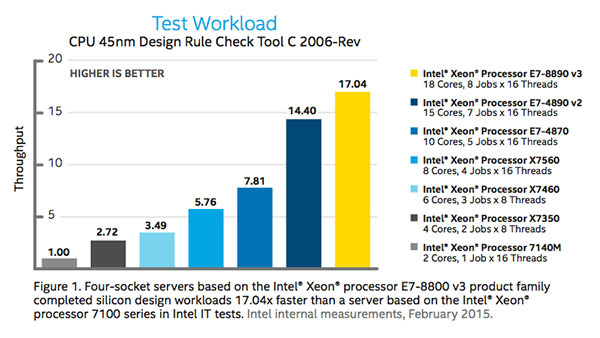Faster Design with Intel Xeon Processor E7-8800 v3 Product Family

IT Best Practices: Silicon design is one of the most critical business functions at Intel, and it requires significant computing resources. Larger and more compute-intensive design jobs require four-socket servers, which offer greater processing power and memory capacity to help ensure these long-running jobs are completed to meet critical design timelines. Accordingly, large-memory four-socket servers are an essential component of the Intel IT high-performance computing (HPC) silicon design environment.
Intel IT recently conducted tests to assess the potential benefits to silicon design of four-socket servers based on the Intel Xeon processor E7-8800 v3 product family. These servers include up to 18 cores and 45 MB last-level cache per processor—20 percent more cores than the previous generation. They support 64-GB DIMMs for application workloads that require large memory capacity. Our tests used a large multi-threaded electronic design automation (EDA) application operating on current Intel silicon design data sets.
This new server completed a complex silicon design workload 1.18x faster than a server based on previous generation Intel Xeon processor E7-4800 v2 series and 17.04x faster than a server based on the Intel Xeon processor 7100 series, as shown in Figure 1.
Based on our results, the Intel Xeon processor E7-8800 v3 product family offers significant throughput improvements compared to prior generations; these improvements can accelerate long-running silicon design jobs, thereby helping to reduce the time required to bring new silicon designs to market.
For more information on Intel IT Best Practices, please visit intel.com/IT
Posted in:
Information Technology, Intel, Intel IT, IT White Papers, IT@Intel

